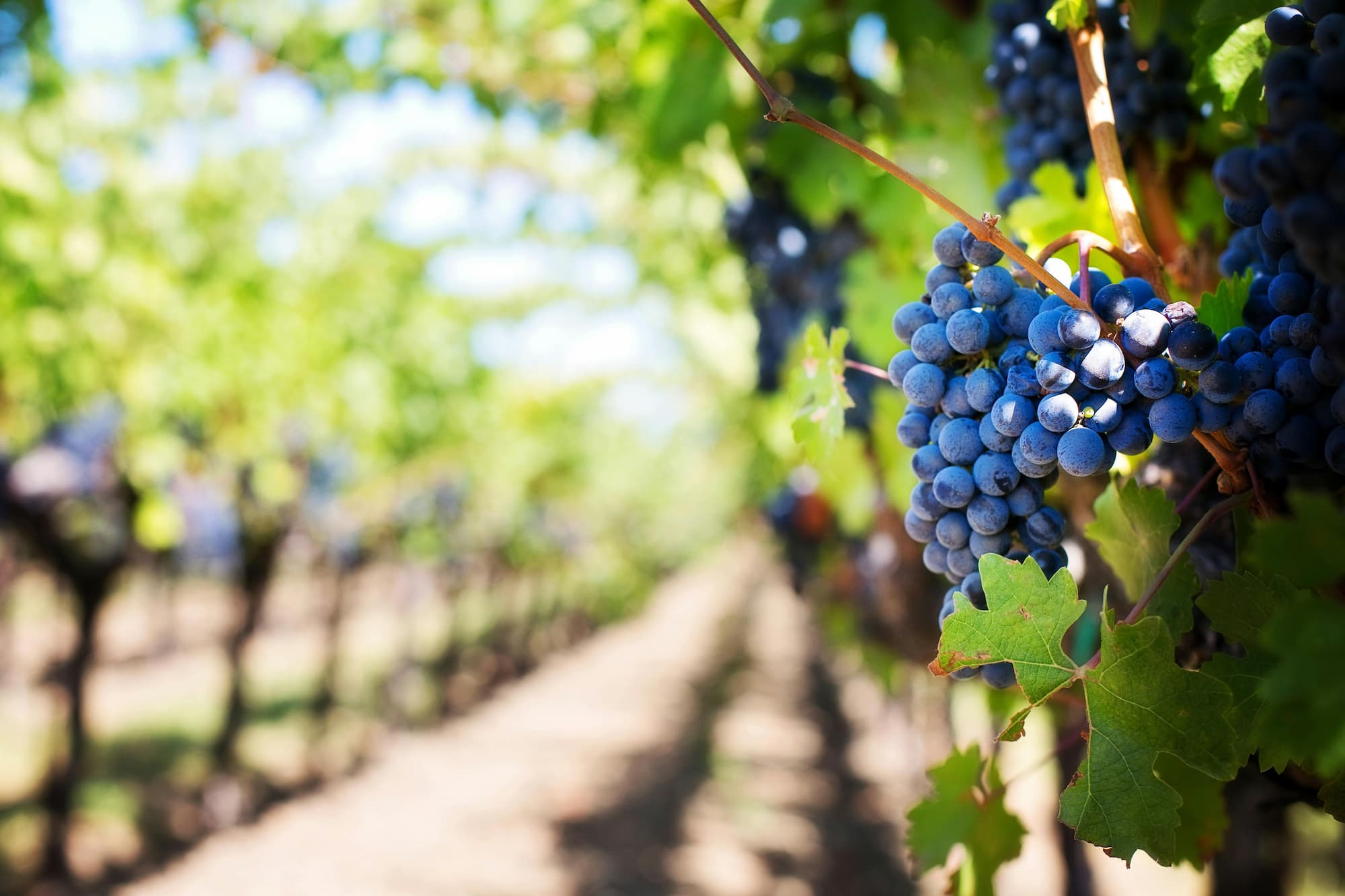Do yourself a favor and enjoy a bottle of Chinon in early spring, when the hardier trees are budding, but winter’s chill still lingers. I say this from experience: I once sat near the window of a slightly chilly wine bar after the electricity had gone out. The Chinon we ordered was a lighter color than I expected — not much darker than a pinot noir — but its taste was unique: red berries, bell pepper, and a tannic acidity so zesty it positively danced on my tongue. I’ve had wines that were elegant, even sassy, but this one was alive. I attribute this fact to two reasons — a good producer and the wine’s sole varietal: the versatile black grape known as Cabernet Franc, co-parent to the wildly popular Cabernet Sauvignon and Merlot varietals. Red wines made from this grape can be as fresh as a Beaujolais or deep as a Bordeaux. It’s also used to make rosé and ice wines.
The town of Chinon is located in the central Loire Valley and focuses on producing red wine made from Cabernet Franc. It’s been this way for a long time — possibly since the 12th century, when the town’s wines were served in the Plantagenet courts. In time, Cabernet Franc made its way to Bordeaux, where it became parent to both of that region’s mainstays, Cabernet Sauvignon and Merlot, as well as being a major player in certain red wines from Sainte Émilion. Now, Cabernet Franc can be found all over the world, either featured as a sole varietal or a dependable blending agent.
Cabernet Franc: color, aroma, and flavor

Cabernet Franc can be quite robust in flavor, but its color is altogether lighter and brighter than Cabernet Sauvignon. You’re likely to detect green pepper, strawberries, cassis, and maybe violets on the nose — especially if the grape was grown in cooler climates. Cabernet Franc wines produced in warmer climates can smell like dried berries and cayenne pepper.
Depending on the soil it was grown in, the palate will boast flavors ranging from tart red fruit, tobacco, gravel, graphite, licorice, and leather on the palate — along with a leafy, vegetal greenness that comes across like nothing so much as bell pepper. At the finish, expect a dancing acidity that is like nothing else. The wine’s tannic structure also depends on climate: warmer ones produce fuller, more tannic wines, which are good for storing in your home wine cellar. Regardless, every Cabernet Franc wine gets more savory with age.
Where does Cabernet Franc grow?

As mentioned, Cabernet Sauvignon is a signature grape of the Loire and Bordeaux regions in France. It also features prominently in the extreme northeast region of Italy, though it’s been heading south, appearing in some Chianti blends and being planted in Tuscany. When winemakers in Hungary weren’t having luck with Cabernet Sauvignon, they planted Cabernet Franc instead. The grape thrives in the Villány region, where it makes dark, full-bodied, and spicy wines.
Not surprisingly, given how tenacious the vines are, Cabernet Franc is being planted in Greece, Bulgaria, Croatia, and Spain. It’s also taken root on both the east and west coasts of America as well as Canada. While it’s gaining popularity in Argentina (where it’s featured in single-varietal wines), Cabernet Franc is a popular blending component in wines from Australia, New Zealand, and South Africa.
Food pairings for Cabernet Franc

Because of its rustic quality and firm tannic structure, wines made with Cabernet Franc pair beautifully with game meats like rabbit and venison as well as lamb — especially the full-bodied ones from Bordeaux or Italy. The bright acidity of wines from the Loire Valley pair well with earthy lentils and tomato-based dishes. In short, Cabernet Franc makes spring wines — fantastic with fresh herbs, cheeses like brie and bleu, game, and vegetables like arugula and roasted eggplant.
How to serve Cabernet Franc

Wines made from Cabernet Franc aren’t fussy, but should be served slightly cooler than room temperature (ideally around 68 degrees Fahrenheit). This is warm enough to let the nose develop while cool enough to preserve its finish. Lighter-bodied wines can be enjoyed immediately, while more full-bodied ones benefit from a half hour of proper decanting to let them develop.




